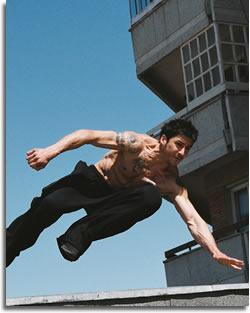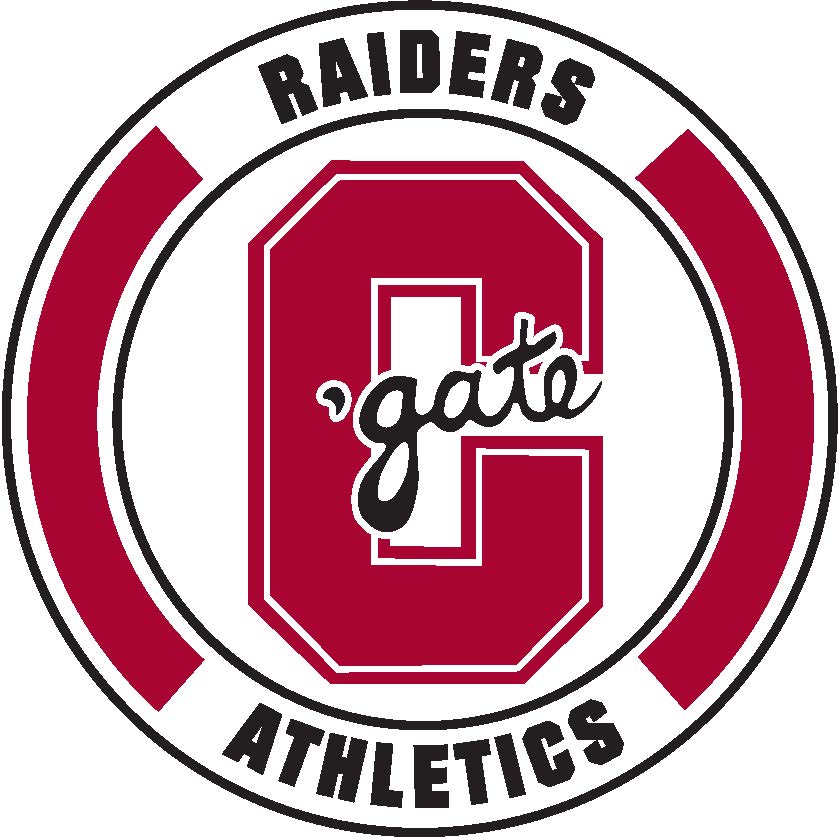
You’re running for your life! You want to get as far away as fast as possible from whomever is chasing you and nothing will get in your way…
Perhaps the idea of you or me performing Spiderman jumps and flips from the nearest high rise is pure fantasy, but for practitioners of the sport Parkour (called Traceurs) it is what they do almost daily.
To give you an idea of just how extreme this sport is, imagine standing on the rooftop of your office building visualizing a straight line from work to your house. If you were a seasoned Traceur you would skip the bus and simply jump, climb, roll, hang, grab and use all four limbs to propel yourself home.
Parkour was born in the slums of France, the brainchild of stuntman and actor David Bell. The Godfather of Parkour describes it as to “Move in such a way, with any movement, that will help you gain the most ground on someone/something as if escaping from someone/something or chasing toward someone/something. Also, wherever you go, you must be able to get back. If you go from A to B, you need to be able to get back from B to A. You don’t need to do the same “move,” but just get back.”
Parkour first came to the attention of the world when David Bell stared in the 2003 Documentary “Jump London”, which was broadcast to the entire population of the United Kingdom over free to air TV station Channel 4. The 2005 sequel, “Jump Britain”, was aired in both England and America but what really got our attention was when Madonna included the sport in her 2006 Video for the single “Jump”.
Anyone who missed the action because of a lack of interest in Madonna’s music could have seen an excellent display of Parkour by Daniel Craig and Sebastian Foucan (a previous student of David Bell), in the opening chase scene of the newest Bond movie, Casino Royale.
Although Parkour has had ample exposure in the past few years (including being used as a new advertising concept by Nike, Nissan and Coke) there is a lot more to it than just looking really, really cool. As David Bell told Kung Fu Magazine, “What I’m doing is also a way of life, where the training is of course physical, but we also have a moral philosophy.”
That philosophy is similar to those found in the Martial Arts: improvement of the self through the practice of Parkour, using what you learn to help others and promoting self progression.
“Parkour is a way for our bodies to face and move in and around obstacles in our environment, whether that be manmade structures or the natural environment. It’s about tackling fears because obstacles don’t always appear as we imagine, and it’s also about attaining self knowledge. So you can see then that parkour is in the spirit of martial arts, but it’s not a martial art.” David Bell explained to Dr Reid.
Whatever category it fits into, us Australians seam to love it. Because of a massive spike in popularity and increasing demand for classes (the need for liability cover for Parkour Teachers also played a part), the Australian Parkour Association (APA) was formed in 2006. The organisation now runs classes in Melbourne, Sydney, Canberra, Brisbane, Ballarat, Geelong, Dandenong and even Ballina (NSW).
But is it here to stay? As man’s latest invention in the pursuit of the impossible, Parkour and it’s origins could well become obsolete when we find something newer, faster and more dangerous to do.
As the 28 year old president of the APA, Matthew Campbell, told The Age, “It’s like anything. Rollerblading – it’s come, it’s gone. It will probably come again. And I think Parkour will be the same. It’s on the rise. It hasn’t peaked yet, not in Australia.”
So watch out Spiderman, here come the Traceurs, only they don’t have web safetynets, these guys and girls mean business! If you are after an adrenalin hit on tap, get in touch with your local club and get scaling.






